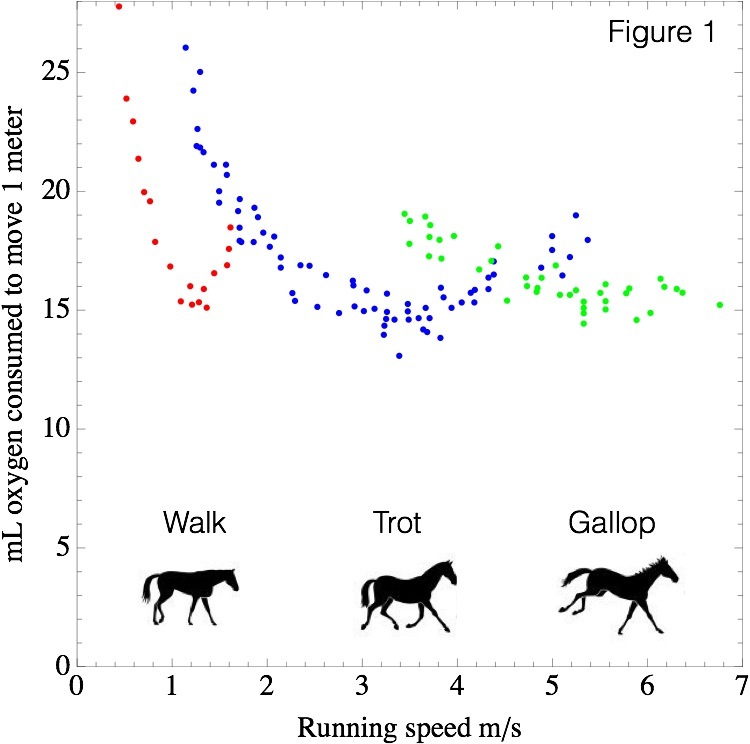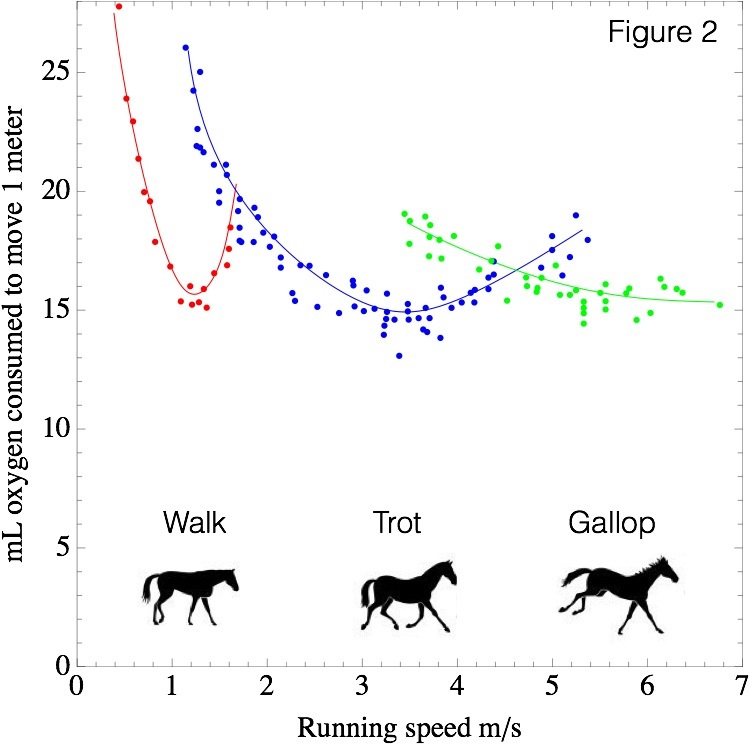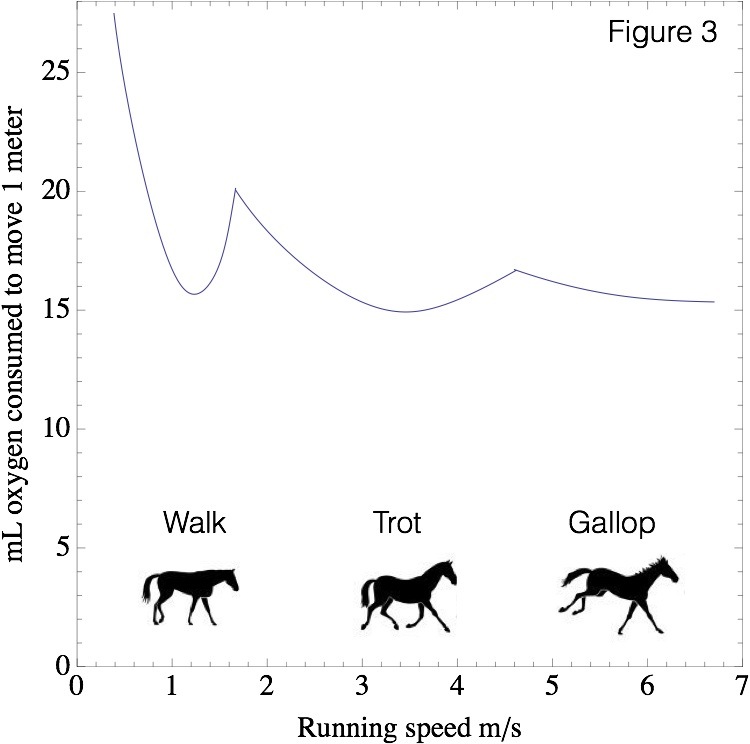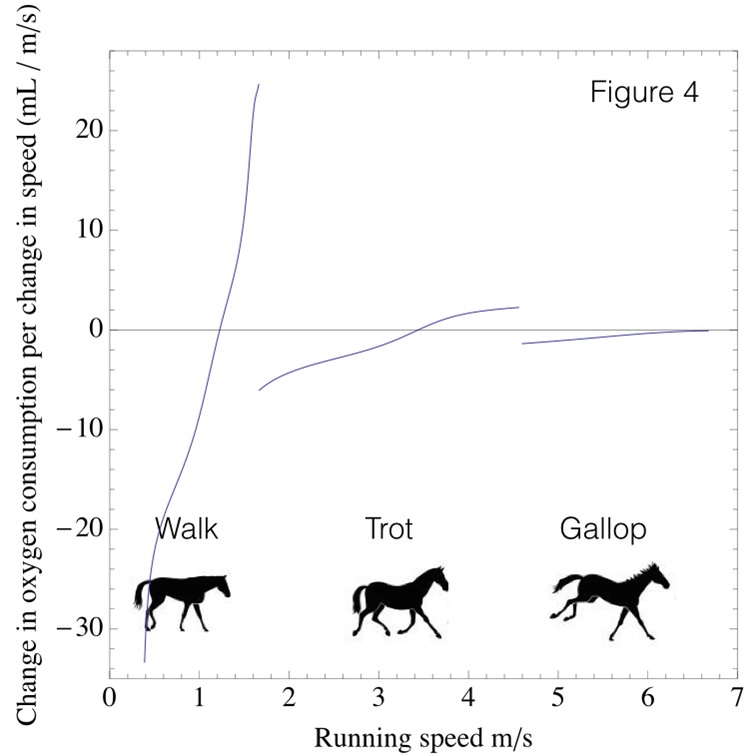The piecewise defined function in Example 3.2.7 of the textbook was obtained from data on human walking and running. Consider another example involving horse locomotion. Figure 1 shows data on the oxygen consumption of horses when moving at different speeds, for three different movement patterns or “gaits”: Walking (red), Trotting (blue), and Galloping (green).

A curve giving the oxygen consumption as a function of speed can be drawn through the data for each gait. Figure 2 illustrates this idea.

If a horse always uses the gait that minimizes oxygen consumption at any given speed, then oxygen consumption as a function of speed will be given by the piecewise defined function shown in Figure 3.

Just as with the function for human locomotion in Example 3.2.7 of the textbook, the oxygen consumption function for horse locomotion in Figure 3 is not differentiable at speeds where the gait changes because the function has a corner at these speeds. But it is differentiable everywhere else. Figure 4 plots the graph of its derivative.

Notice in Figure 4 that the graph has discontinuities at speeds where the horse changes gait. Also notice that the derivative for walking changes sign, from negative to positive, as speed increases (the same is true for the derivative for trotting). This reflects the fact that the oxygen consumption when walking (shown in Figure 3) decreases with speed until around 1.2 m/s and then it increases again until the horse switches from walking to trotting.
References
Data are from Hoyt, D.F. and C.R. Taylor. 1981. Gait and the energetics of locomotion in horses. Nature 292:239-240